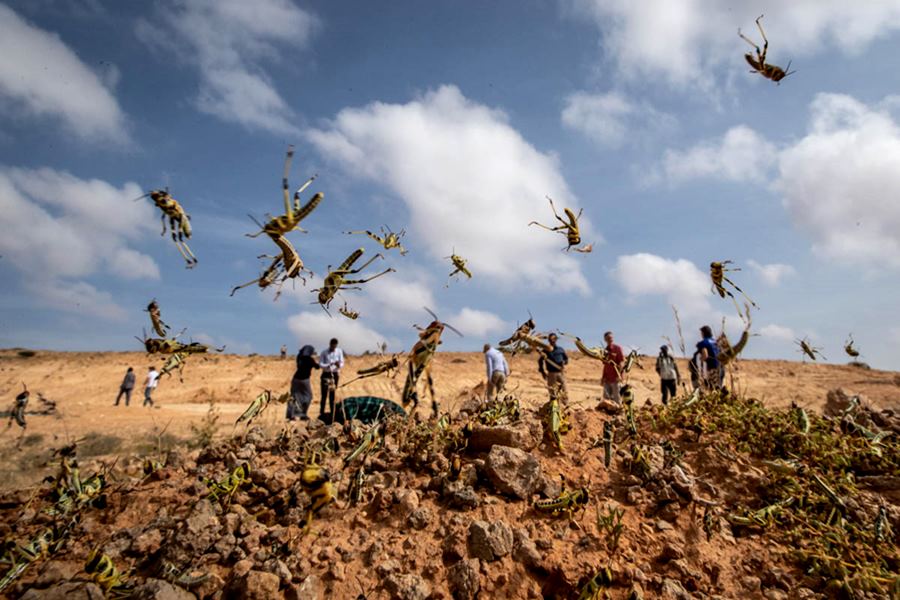Fri 05 February 2021:
Somalia has declared a state of emergency on Thursday over a new generation of desert locust swarms that have caused major damage to farmlands.
On its official Twitter account, Somali state television announced that the country’s Ministry of Agriculture had declared a state of emergency due to the desert locust invasion.
This decision was taken during a meeting held by officials of the Somali Ministry of Agriculture, representatives of the South West State of Somalia and the United Nations Food and Agriculture Organisation (FAO).
Earlier, Kenya had announced that many of the country’s regions were invaded by desert locust swarms coming from Ethiopia and Sudan.
Locusts cause serious panic among the population, as they travel 150 kilometres daily in East Africa, causing severe damage to crops.
The intensity of the East African desert locust outbreak has also been blamed on climate change with a focus on Cyclone Gati in the Indian Ocean, which made landfall on the Somali coast, the FAO said. In a statement, it warned that “rains and winds are two of the most favorable conditions for desert locusts to multiply rapidly and spread to areas where they had been under control.”
Dominique Burgeon, the FAO’s director of emergencies and resilience, told reporters that the huge desert locust swarms in 2020, some as wide as 60 kilometers (37 miles), had not been seen in decades, threatening food security in a region where many were already going hungry, and the 2021 swarms have been said to be deadlier, as Anadolu Agency (AA) reported.
The FAO said that more than half of the country’s population – 6.7 million people – is currently experiencing severe food insecurity. This is up from 6.2 million in February last year. Of these, 3.2 million people face a severe food deficit.
Fifteen out of 47 counties in neighboring Kenya have been hit by a second, deadlier wave of locusts that came in through Ethiopia and Somalia. The Kenyan government announced that most of the new swarms came in through southern Somalia. Other East African countries including Uganda, South Sudan, Eritrea and Djibouti are also at risk. Millions of people in some of these places are already facing hunger in the wake of civil war or more common challenges such as poverty.
In December the U.N. said that locust infestations had increased in Ethiopia and Somalia as a result of extensive breeding, favorable weather and rainfall, with populations predicted to increase further in the coming months.
“New locust swarms are already forming and threatening to re-invade northern Kenya and breeding is also underway on both sides of the Red Sea, posing a new threat to Eritrea, Saudi Arabia, Sudan and Yemen,” FQO said in a news release on Dec. 16.
It warned that the new crisis could have devastating consequences for communities affected by drought, ongoing conflict, rising food prices and the coronavirus pandemic.
“We have achieved much, but the battle against this relentless pest is not yet over,” said the director-general of FAO, QU Dongyu. “We must not waver. Locusts keep growing day and night and risks are exacerbating food insecurity for vulnerable families across the affected region.”
FILE PHOTO

FOLLOW INDEPENDENT PRESS:
TWITTER (CLICK HERE)
https://twitter.com/IpIndependent
FACEBOOK (CLICK HERE)
https://web.facebook.com/ipindependent
Think your friends would be interested? Share this story!




















